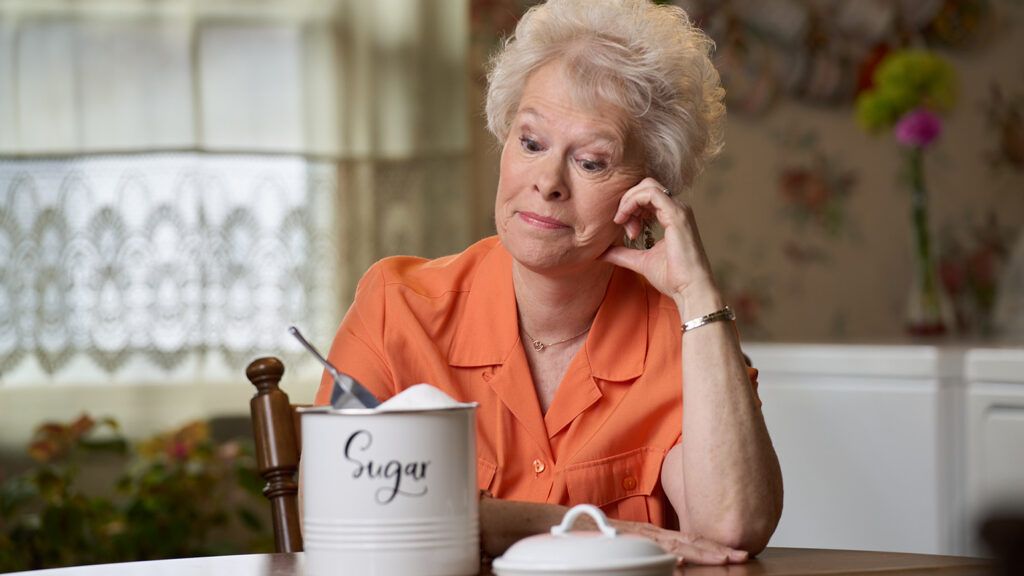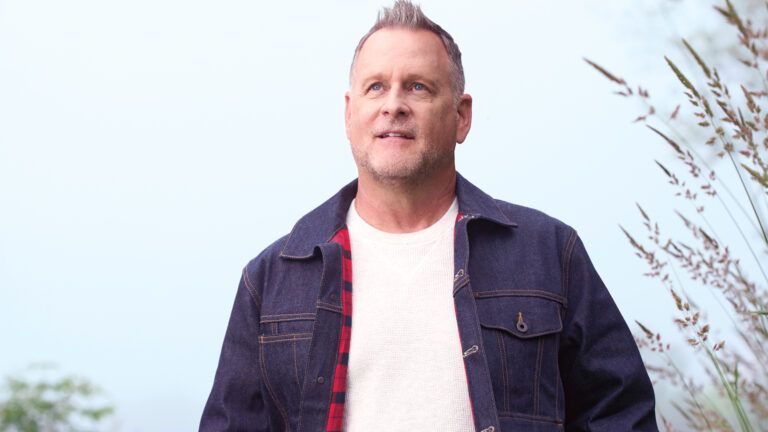My husband, Kevin, handed me a bowl of my favorite ice cream, raspberry with dark chocolate chunks. “Just set it on the TV tray, honey,” I told him. “I can’t eat while I have this traction collar on.”
I hated putting on that contraption every night, but my chiropractor said it would help ease my chronic neck pain. How aggravating that I was still having sharp pain and numbness from a car accident injury more than 40 years ago! Would I always need the heat packs and neck-stretching exercises for relief?
I longed for a more permanent solution, especially since I had committed to taking better care of myself. I exercised four or five times a week, got plenty of sleep and had a healthy diet. Well, mostly. Except for sugar. Besides a serious dessert ritual, I kept chocolate and other candy in my desk drawer at work. I joked that my biggest regret in life was a freezer that held only 17 cartons of ice cream.
But in light of sugar being proven harmful to health in many ways, I had started wondering if my intake of sweets was exacerbating my pain. The next time I visited my chiropractor, I asked if my habit could be affecting my joints. “Oh, yeah,” he said. “Refined sugar is one of the worst things you can eat to aggravate joint pain.”
Even so, with the holidays coming up, I wasn’t ready to say no to Christmas cookies, pies and other treats. I decided to wait until after the new year to start my low-sugar lifestyle.
In late January, the family gathered at our favorite Mexican restaurant to celebrate Mom’s ninety-fourth birthday. We feasted on enchiladas, chimichangas and a double-chocolate cake. As I wiped fudge frosting from my lips, I told myself, This is it. My last major helping of sugar. Tomorrow I’d cut back to just seven grams a day— the amount that worked for my friend Diana, who had a serious digestive issue that forced her to avoid sugar and simple carbohydrates.
But after the next day’s breakfast of unsweetened oatmeal and lunch without dessert, my body was screaming for a cookie. Who am I kidding—three cookies! I grabbed some mixed nuts and pretended those satisfied my sweet tooth. If only! Over the following weeks, I underwent the tortures of sugar withdrawal: fatigue, carbohydrate cravings, even depression.
Then came the day I had a stressful conversation with a coworker. I retreated to my desk and ransacked the drawer in a near panic, searching for a peppermint patty or peanut butter cup. That night, I promised myself a Girl Scout cookie as a reward for finishing a tough writing assignment but found Kevin had eaten the last one.
I was beyond frustrated—I was angry. “Lord, why is this so hard?” I asked, near tears.
The word addiction ricocheted in my brain. There finally was the truth: I was addicted to sugar, not just superficially dependent on it. Admitting this to God and to myself made me see how powerless I really was. I needed far more than just a fix for my aching neck and shoulder; I needed healing for whatever it was that caused me to turn to sweets. And that meant some painful soul-searching to unearth the why of my sugar addiction.
I forced myself to dig deep, scenes from my childhood flashing through my mind. Whenever my brother told me I was stupid and I ran to Mom crying, she gave me a cookie. “Here, honey, this will make you feel better,” she’d say. Dessert wasn’t just a sweet end to a meal; it was also a reward for eating my veggies and drinking my milk, things that made Mom happy.
And having a stash of candy in my dresser drawer made me feel rich in blessings. I could pretend I was a princess whose daddy never got drunk, who never had to listen to angry shouting behind closed doors, who never had to hear her mom say, “We’re getting a divorce.” A princess who never had to attend her father’s funeral after he died of cirrhosis of the liver, just seven months into Mom’s new marriage to another alcoholic.
Looking back at the psychological role that sweets played in my past explained why I used them as a crutch. I didn’t reach for candy and cookies to satisfy any physical hunger. I did it to reward, cheerlead and comfort myself. It was emotional eating. This new understanding helped. But I also needed healthy ways to cope with my addiction, both physically and spiritually.
I thought of my friend Diana again. I knew she could share some strategies for managing my cravings. I zipped off an email to her with the subject line “Help!”
Diana sent me links to articles with great tips. Like eating sour or bitter foods and drinks, to block the brain’s response to sugar. Exercising more to increase the feel-good hormones. Meditating on encouraging Bible verses and repeating positive affirmations.
Diana also committed to pray for me as I wrestled with my addiction. And wrestle I did. Whenever I felt powerless or overwhelmed by my urges, I learned to shift my focus. I’d walk around the neighborhood and revel in the wonders of nature, work a jigsaw puzzle with Kevin or get lost in a novel.
As each month passed, I became stronger in my resolve. When I was able to go two full months between chiropractor visits, the doctor told me, “Cutting out sugar is one reason you’re doing so well.”
For more than a year and a half now, I’ve been eating no more than seven grams of sugar a day. I no longer panic when the only snack at hand is trail mix or popcorn. I can push my chair back from the dinner table and not pine for a dish of ice cream. I don’t even feel deprived when Kevin orders from a list of 27 pie flavors at a café and I have only two sugar-free choices.
Yes, I’m still tempted occasionally, and I have to lean on my new habits to get me through a church potluck or a birthday party. But I’m no longer responding to stresses and hardships like that little girl, trying to soothe her broken heart with sweets. I know where to turn when I can’t do life on my own. I’m learning to ask God for comfort and affirmation, and that is the sweetest feeling of all.
For more inspiring stories, subscribe to Guideposts magazine.





